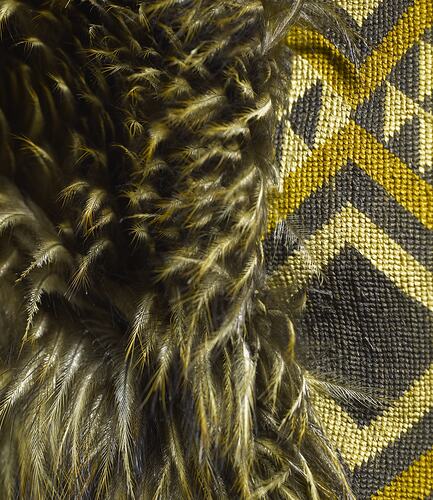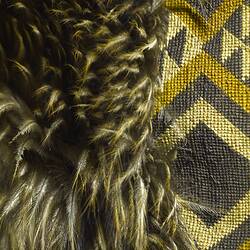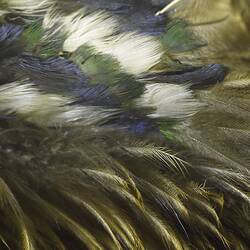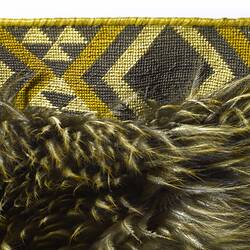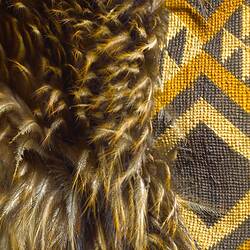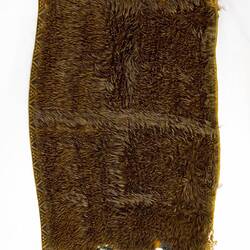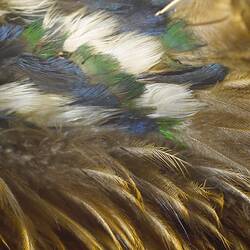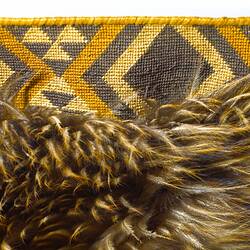Summary
The kahu kiwi is a traditional Maori cloak, highly valued for its craftsmanship and cultural significance. It is woven from fine fibres of harakeke (phormium tenax) and decorated primarily with kiwi feathers. To enhance its appearance, each feather is carefully knotted at the base with the shaft facing downward, ensuring the feathers fan outward when worn. Highly prized feathers are interspersed with the kiwi, including rare kaka feathers, adding mana to this garment.
The making of these cloaks was subject to tapu, a set of sacred restrictions. These rules governed every stage of production, from the gathering of materials to the weaving process. Once completed, specific rituals were performed to lift the tapu, making the cloak safe to wear and handle.
In Maori society, the kahu kiwi was among the most prestigious garments, second only to the kahu kuri, a cloak made from dog skins. These cloaks were symbols of high status and were reserved for individuals of great importance, worn during special ceremonies and significant occasions.
Local Name
Kahu kiwi
Physical Description
The cloak is woven from flax fibres closely worked and decorated with kiwi feathers. It also has a small number of parrot feathers embedded within the kiwi feathers. One border is done with dyed flax woven into a geometric pattern.
More Information
-
Object/Medium
Cloak
-
Maker
-
Locality
-
Date Produced
-
Date Collected
-
Object Measurements
930 mm (Length), 690 mm (Width), 120 mm (Height)
-
Keywords
-
Type of item
-
Discipline
-
Category
-
Collecting Areas
